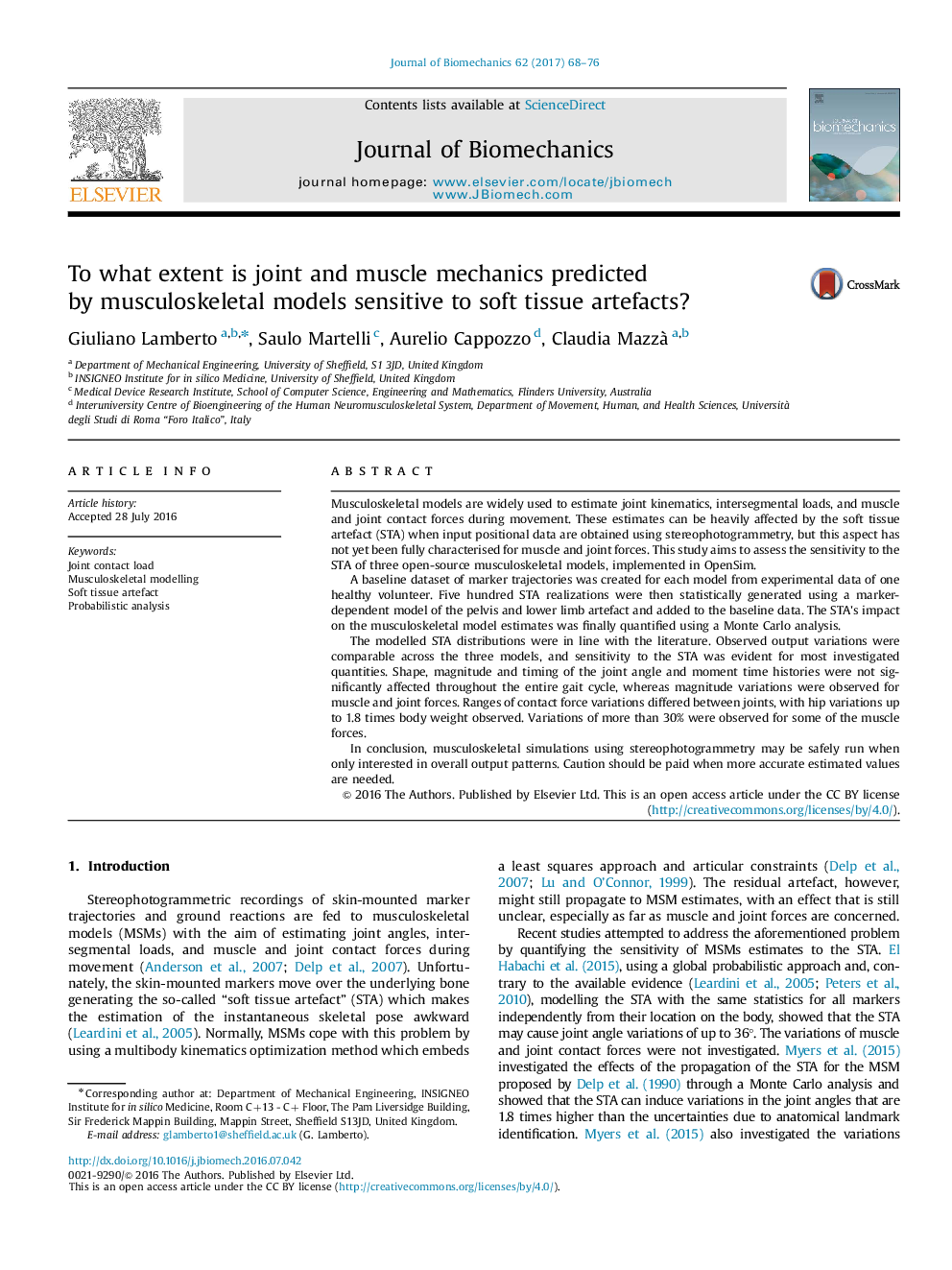| Article ID | Journal | Published Year | Pages | File Type |
|---|---|---|---|---|
| 5031889 | Journal of Biomechanics | 2017 | 9 Pages |
Musculoskeletal models are widely used to estimate joint kinematics, intersegmental loads, and muscle and joint contact forces during movement. These estimates can be heavily affected by the soft tissue artefact (STA) when input positional data are obtained using stereophotogrammetry, but this aspect has not yet been fully characterised for muscle and joint forces. This study aims to assess the sensitivity to the STA of three open-source musculoskeletal models, implemented in OpenSim.A baseline dataset of marker trajectories was created for each model from experimental data of one healthy volunteer. Five hundred STA realizations were then statistically generated using a marker-dependent model of the pelvis and lower limb artefact and added to the baseline data. The STA׳s impact on the musculoskeletal model estimates was finally quantified using a Monte Carlo analysis.The modelled STA distributions were in line with the literature. Observed output variations were comparable across the three models, and sensitivity to the STA was evident for most investigated quantities. Shape, magnitude and timing of the joint angle and moment time histories were not significantly affected throughout the entire gait cycle, whereas magnitude variations were observed for muscle and joint forces. Ranges of contact force variations differed between joints, with hip variations up to 1.8 times body weight observed. Variations of more than 30% were observed for some of the muscle forces.In conclusion, musculoskeletal simulations using stereophotogrammetry may be safely run when only interested in overall output patterns. Caution should be paid when more accurate estimated values are needed.
